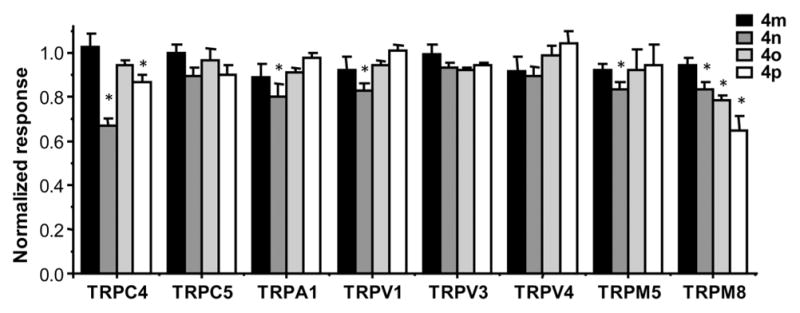Figure 6.

Compounds 4m–4p had little or no effect on related TRP channels. Stable HEK293 cell lines expressing MOR/TRPC4β, TRPC5, TRPA1, TRPV1, TRPV3, TRPV4, TRPM5, and TRPM8 were seeded in wells of 96-well plates and loaded with either FMP dye (TRPC4, C5, and M5) or Fluo8-AM (TRPA1, V1, V3, V4, and M8). Changes in membrane potential or [Ca2+]i were read in a microplate reader, while compound 4m, 4n, 4o, or 4p (33 μM) was applied for 2 min before the corresponding agonist known to activate the channel (C4, 1 μM DAMGO; C5, 100 μM CCh; A1, 100 μM flufenamic acid; V1, 1 μM capsaicin; V3, 200 μM 2-APB; V4, 30 μM RN-1747; M5, 100 μM CCh; M8, 100 μM menthol) was added, and measurement continued for 2.5 min. After the agonist addition, the test compound was diluted to 22 μM. Shown are summary data for the agonist-evoked response (area under the curve) in the presence of the test compound normalized to that in the absence of the test compound. n = 4–10 measurements. * p < 0.05 compared to no test compound by Student’s t test.
